Follow 👆 the official account and reply "python" to receive a beginner's tutorial!This programming language is easy to get started with and powerful, adhering to the principle of “minimalism”.
The Python libraries (modules) are extremely rich, making Python almost omnipotent, whether for traditional web development, PC software development, Linux operations, or the currently hot fields of machine learning, big data analysis, and web scraping, Python can handle it all.
[Instructions for receiving at the end of the article!!]
[Instructions for receiving at the end of the article!!]
This set of Python basic tutorials is not a textbook; it does not play with concepts but strives for a conversational and accessible style, allowing readers to get started quickly.
If a child is learning Python out of interest, please guide them to read the first half of this tutorial, as it lays the foundation and reduces learning costs; if you want to master Python programming comprehensively and handle actual project development in a company, you should study all chapters of this tutorial step by step.
Refined through countless trials, only for great works; striving for perfection, considering every detail; this kind of tutorial is captivating at first glance.
1. What is a programming language
2. The difference between compiled languages and interpreted languages
3. What is Python
4. What are the advantages and disadvantages of Python?
5. You don’t need a programming background to learn Python!
6. What can you do with Python? What are the application fields of Python?
7. How to learn Python to become proficient?
8. The difference between Python 3 and Python 2
9. How should beginners choose between Python 2.x and Python 3.x?
10. How to automatically convert Python 2.x code to Python 3.x code?
11. As a programmer, how can you keep up with the latest changes in Python?
12. What language is Python implemented in at the core?
13. Understanding Jupyter Notebook, you have already surpassed 90% of Python programmers
Chapter 2 Setting Up the Python Programming Environment
1. Installing Python on Windows
2. Installing Python on Linux
3. Installing Python environment on Mac OS
4. Solutions for “python is not an internal or external command” error
5. How to run a Python program?
6. The first Python program
7. What is an IDE (Integrated Development Environment)?
8. What Python IDEs are available, and which one is suitable for beginners?
9. How to use Python IDLE (including common shortcuts)
10. Downloading and installing PyCharm tutorial
11. Running the first Python program in PyCharm
12. Downloading and installing Python Eclipse + PyDec tutorial
13. Running the first Python program in Eclipse + PyDec
14. Downloading and installing Python VS Code tutorial
15. Running the first Python program in VS Code
16. Downloading and installing Python Visual Studio tutorial
17. Running the first Python program in Visual Studio
18. Python comments
19. Python indentation rules (including shortcuts)
20. Python coding standards (PEP 8)
21. After reading this article, thoroughly understand the importance of Python coding standards
22. Python identifier naming conventions
23. Python keywords (reserved words)
24. Python built-in functions
Chapter 3 Variable Types and Operators
1. Definition and use of Python variables
2. Python integer type (int)
3. Python decimal/floating point (float)
4. Python complex type (complex)
5. Why does Python’s floating-point type have errors?
6. Python strings
7. What encoding format does Python strings use?
8. Python bytes
9. Python bool type
10. Initializing variables in Python does not necessarily allocate new memory!
11. Python input() function: get user input string
12. Advanced usage of Python print() function
13. Python formatting strings
14. Python escape characters
15. Python data type conversion
16. Python arithmetic operators
17. Python assignment operators
18. Python bitwise operators
19. Python comparison operators
20. Python logical operators
21. Python ternary operator
22. Python operator precedence and associativity
Chapter 4 Lists, Tuples, Dictionaries, and Sets
1. What is a sequence? Detailed explanation of Python sequences
2. Python lists (list)
3. Adding elements to Python list
4. Deleting elements from Python list
5. Modifying elements in Python list
6. Finding elements in Python list
7. In-depth analysis of Python list with examples!
8. Quickly initializing a number list with Python range()
9. Implementing stack and queue with Python list
10. Detailed explanation of Python tuple
11. The difference between Python tuples and lists
12. How are Python lists and tuples implemented at the core?
13. Python dict dictionary
14. Basic operations of Python dict dictionary
15. Complete guide to Python dict dictionary methods
16. Formatting strings using dictionaries in Python
17. Python set
18. Basic operations of Python set
19. Methods of Python set
20. Python frozenset
21. In-depth understanding of Python dictionaries and sets, seeing through their essence!
22. Detailed explanation of Python deep copy and shallow copy
Chapter 5 Common Methods of Python Strings
1. Python string concatenation (including concatenating numbers to strings)
2. Slicing strings in Python
3. Python len() function: get string length or byte size
4. Python split() method for splitting strings
5. Python join() method for merging strings
6. Python count() to count occurrences of a substring in a string
7. Python find() to check if a substring exists in a string
8. Python index() to check if a substring exists in a string
9. Python ljust(), rjust(), and center() methods
10. Python startswith() and endswith()
11. Python string case conversion
12. Removing whitespace from strings in Python
13. Python format() method for formatted output
14. Python encode() and decode() methods
15. Python dir() and help()
Chapter 6 Python Flow Control
1. Python if else conditional statements
2. Indentation requirements for Python if else
3. Nesting if statements in Python
4. Python pass
5. Python assert
6. How to use assert correctly, and never mix it with if!
7. Python while loop statements
8. Python for loop
9. Using else in Python loop structures
10. Nesting loops in Python
11. Implementing bubble sort with nested loops in Python
12. Python break: exit the current loop
13. Python continue: skip to the next loop iteration
14. A tip to completely say goodbye to dead (infinite) loops!
15. Python comprehensions, quickly initializing various sequences!
16. Python zip function
17. Python reversed function
18. Python sorted function
Chapter 8 Python Classes and Objects
1. Object-oriented programming in Python
2. Python class: defining classes
3. Python init() class constructor
4. Creating and using class objects in Python
5. Python self
6. Class attributes and instance attributes in Python
7. Instance methods, static methods, and class methods in Python
8. Calling instance methods in Python classes
9. Why Python classes are independent namespaces?
10. What are descriptors? Detailed explanation of Python descriptors
11. Python property()
12. Python @property decorator
13. Python encapsulation
14. Exploring the underlying implementation principles of Python encapsulation
15. Python inheritance mechanism
16. How does Python find parent class attributes and methods in subclasses? (Deep revelation)
17. Python parent class method overriding
18. How to use Python inheritance mechanism to improve development efficiency?
19. Python super()
20. Remember, super() can only be used in new-style classes!
21. Using super(), avoid these “pits”!
22. Python slots
23. Dynamically creating classes with Python type()
24. Python Metaclass
25. How is Metaclass implemented at the core in Python?
26. What is polymorphism? Detailed explanation of polymorphism in Python
27. Python enumeration classes
28. [Python Project Practice] Implementing a search engine using object-oriented concepts
Chapter 9 Special Members of Classes (Attributes and Methods)
1. Python new
2. Python repr
3. Python del()
4. Python dir()
5. Python dict
6. Python setattr, getattr, hasattr
7. Python issubclass and isinstance
8. Python call()
9. What is operator overloading? Which operators can be overloaded in Python?
10. Implementing custom sequences with overloaded operators in Python
11. Python iterators
12. [Python Project Practice] Implementing string reversal output with iterators
13. Python generators
14. More advanced usage of Python generators!
15. Python function decorators
16. In-depth understanding of decorators with examples!
Chapter 10 Python Exception Handling Mechanism
1. What is exception handling
2. Why must you learn the Python exception handling mechanism?
3. Python try except
4. In-depth analysis of the underlying implementation of Python exception handling mechanism
5. Python try except else
6. Python try except finally
7. A comprehensive article to revisit the entire Python exception handling mechanism
8. Python raise
9. Python sys.exc_info() to get exception information
10. Python traceback module: getting exception information
11. How to define a custom exception class in Python?
12. Correctly using the Python exception handling mechanism
13. Debugging programs using the logging module in Python
14. Debugging programs in Python IDLE
15. Debugging programs using Python assert
Chapter 11 Python Modules and Packages
1. What is a module?
2. Python import to import modules
3. Custom modules in Python
4. How to import module names with spaces or starting with numbers?
5. What is the role of Python name==’main’?
6. Three ways to import modules in Python
7. The essence of importing modules in Python
8. Python __all__ variable
9. Python packages: folders that store multiple modules
10. Creating and importing packages in Python
11. The role of Python init.py
12. Viewing module methods in Python
13. Python doc
14. Python file
15. Downloading and installing third-party libraries (modules) in Python
Chapter 12 Python File Operations (I/O)
1. What is a file path, and how to write file paths in Python?
2. Absolute paths and relative paths in Python
3. Basic file operations in Python
4. Python open
5. What is the difference between opening files in text format and binary format?
6. Python read
7. Python readline() and readlines()
8. Python write and writelines
9. Python close
10. Python seek and tell
11. Python with as
12. What is a context manager? In-depth understanding of Python with as statement
13. Python pickle module
14. Python fileinput module: reading multiple files line by line
15. Python linecache module usage: randomly reading specified lines from files
16. Python pathlib module
17. Python os.path module
18. Python fnmatch module
19. Using os module to operate files and directories in Python
20. Python tempfile module: generating temporary files and directories
About Python Technical Preparation
Learning Python is beneficial for both employment and side jobs, but to learn Python, one must have a learning plan. Finally, I will share a complete set of Python learning materials to help those who want to learn Python!
1. Learning Path for All Directions of Python
Organizing all technical points in Python into a summary of knowledge points in various fields, its usefulness lies in that you can find corresponding learning resources according to the knowledge points above, ensuring a relatively comprehensive understanding.
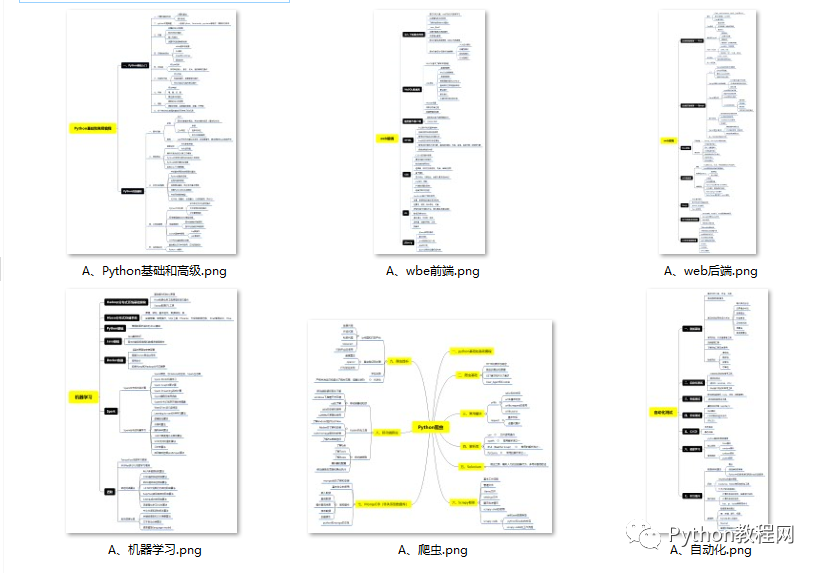
2. Essential Development Tools for Python
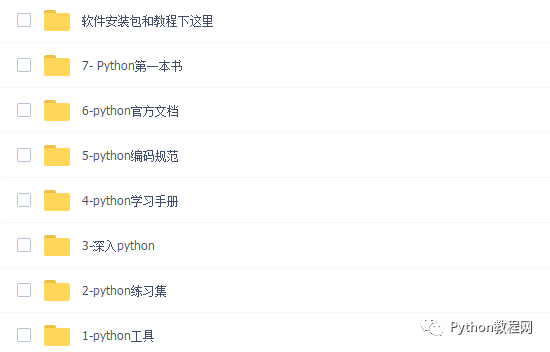
3. Quality Python Learning Books
When I reach a certain foundation and have my understanding ability, I will read some books or handwritten notes compiled by predecessors. These notes detail their understanding of certain technical points, which are unique and can offer different perspectives.
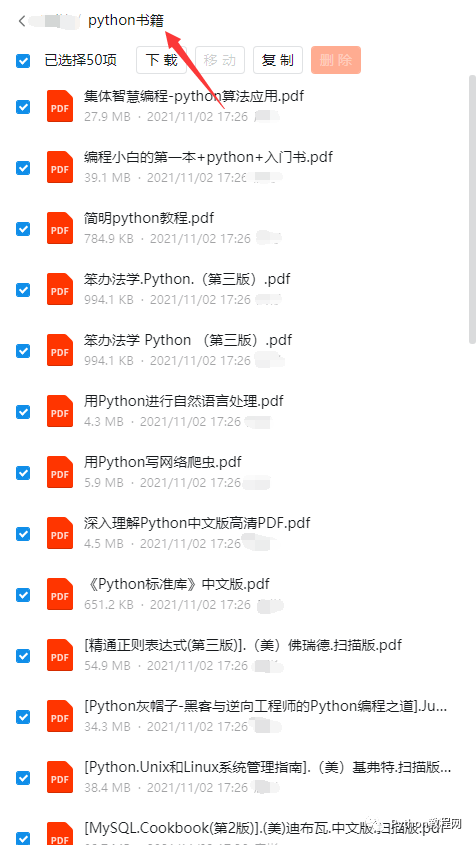
4. Python Video Collection
Watching beginner-friendly learning videos is the quickest and most effective way to learn; following the teacher’s thought process in the videos, from basic to in-depth, makes it easy to get started.

5. Practical Cases
Theoretical knowledge alone is useless; one must learn by practicing hands-on to apply what has been learned in real scenarios. At this time, practical cases can be used for learning.
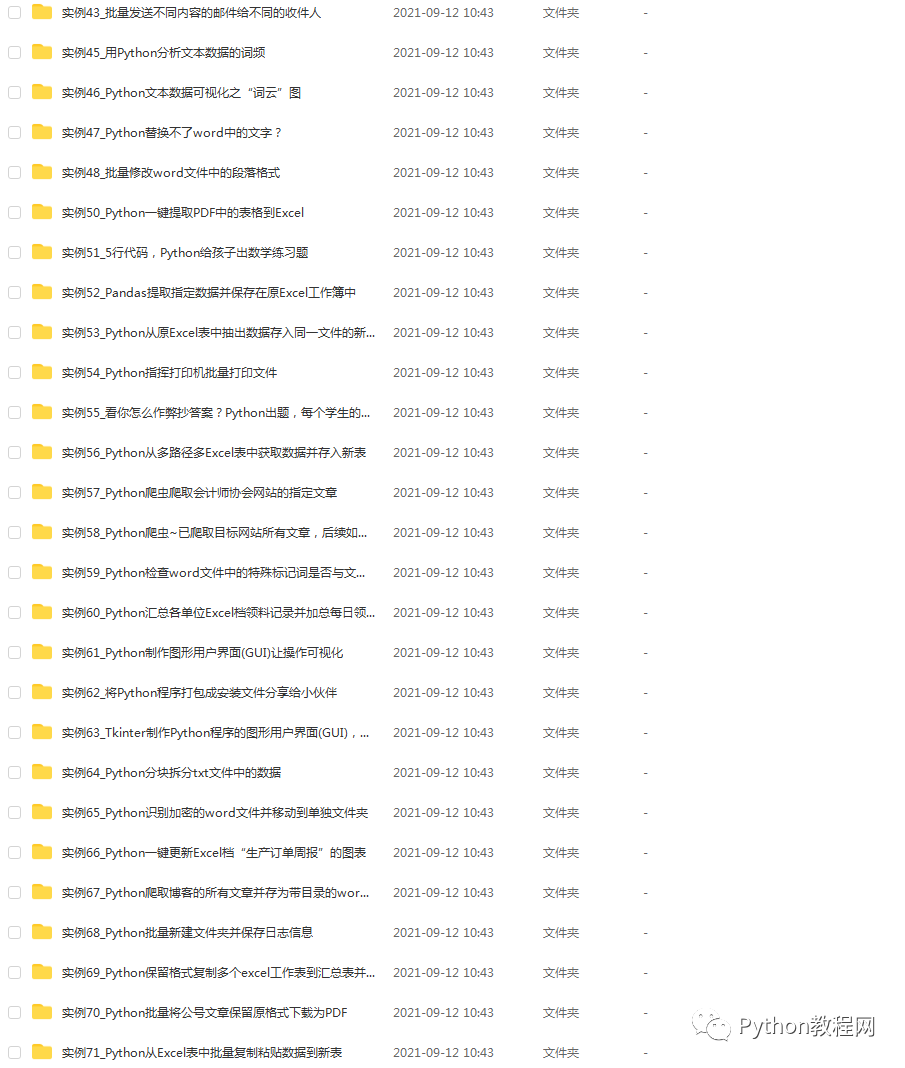
6. Python Practice Questions
Check learning outcomes.
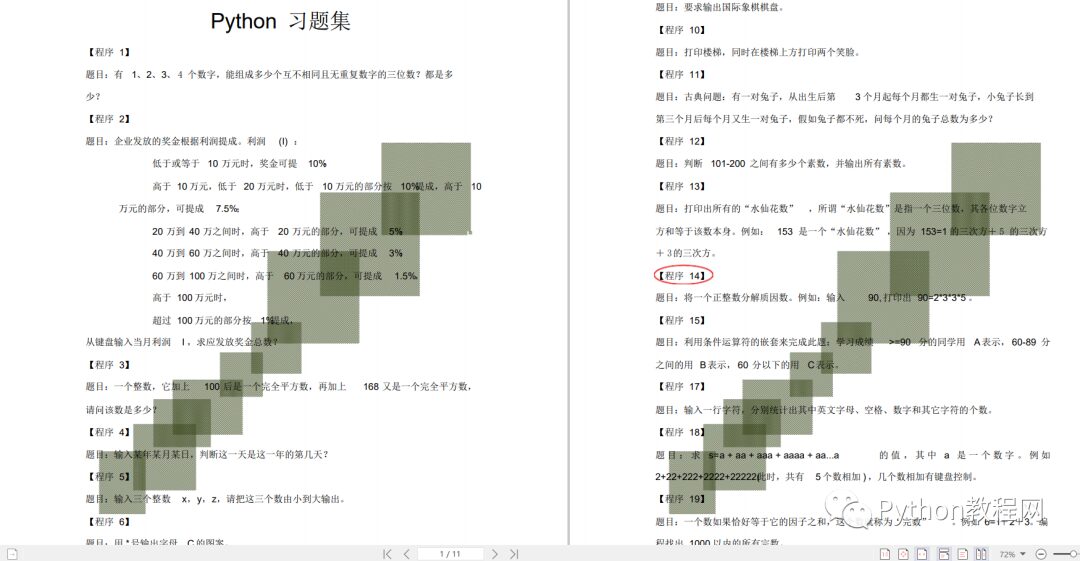
7. Interview Materials
We learn Python primarily to find high-paying jobs. The following interview questions come from leading internet companies like Alibaba, Tencent, and ByteDance, along with authoritative answers from industry experts. Completing this set of interview materials will help you find a satisfactory job.
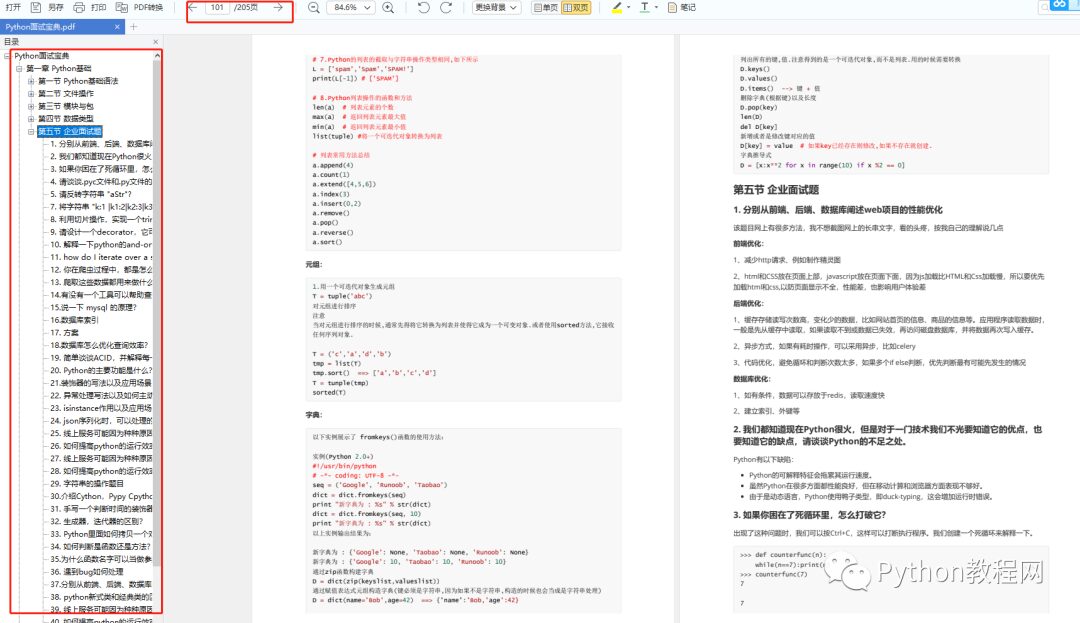
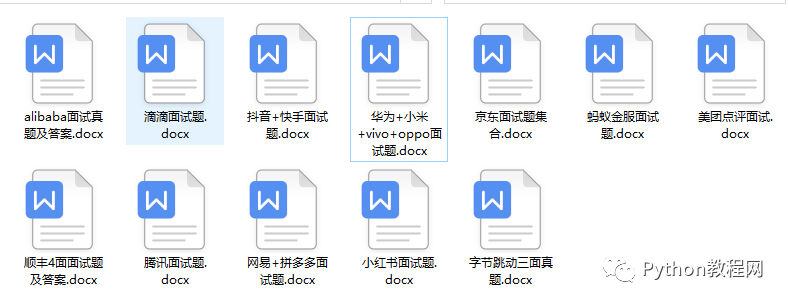
How to obtain:
-
Like + Rewatch
-
Reply “python” in the official account
Get the latest 2024 Python beginner learning materials by replying:Pythonin the backend